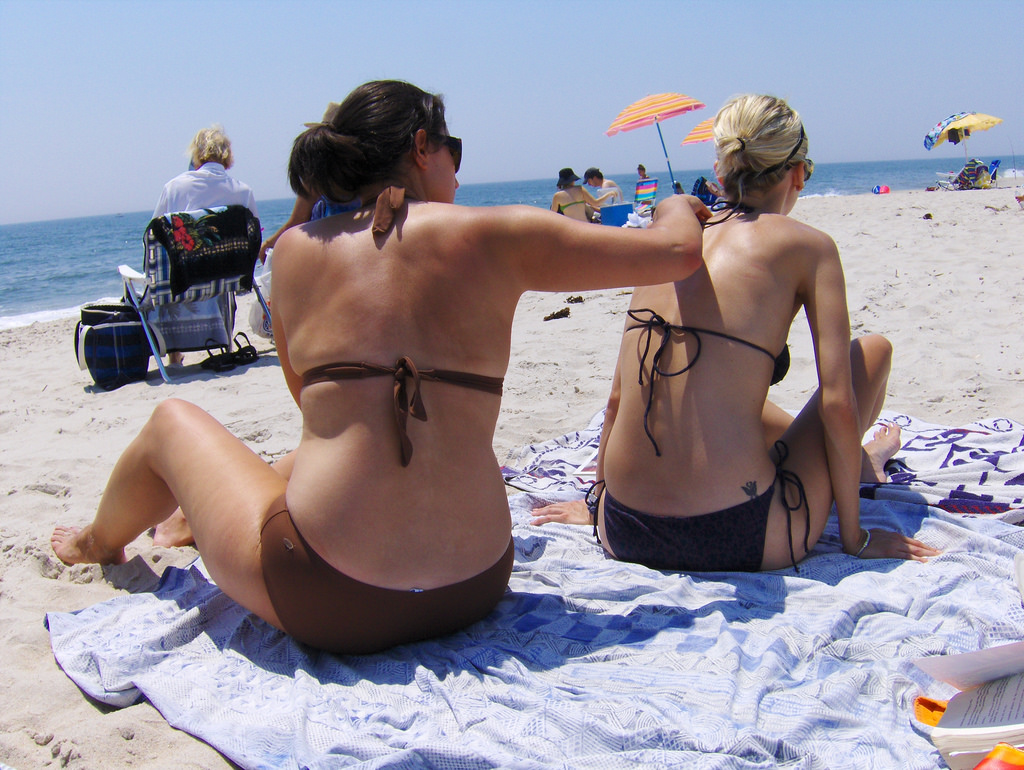
Image: Joe Shlabotnik
According to Skin Cancer Foundation, about 1 in every 5 Americans will develop skin cancer in the course of his/her lifetime. It’s the most common type of cancer that usually affects areas exposed to the sun such as the head, neck, and arms. While the exact cause of cancer is still unknown, there are ways on how to reduce one’s risk. Wearing sunscreen is one of the simplest yet often neglected ways to prevent skin cancer.
What Sunscreen Can Do For You
Natural sunlight contains ultraviolet photons. These photons are not visible to the human eye but are high in energy and shorter in wavelength. But this unseen energy can hurt you.
When the high energy photons strike the skin, they can generate free radicals and in the long run, can cause direct damage to the DNA.
There are two different types of UV rays that we’re usually exposed to – the UVA and the UVB photons. The UVA rays have longer wavelength and can penetrate the deeper layers of the skin. The free radicals that they produce are what cause immunologic problems and premature skin aging.
The shorter wavelength UVB rays, on the other hand, do not penetrate the skin as deep as the UVA rays. However, these UV rays are equally damaging as they can cause significant damage to the DNA. This type of UV rays is the culprit of the painful sunburn and skin cancer.
Wearing sunscreen is one of the simplest ways to protect ourselves from these harmful UV rays. They act as bulletproof vest, protecting us from the UV photons even before they strike the skin and cause significant damage.
Sunscreen products contain particular molecules that aid in absorbing the UV photons. They also contain inorganic pigments that help in absorbing, scattering, and reflecting the UV rays. In order for sunscreen products to become effective against UV rays, they must contain sufficient amounts of these protective agents.
What You Need To Know About Sunscreen
There are basically two types of sunscreen – the physical and the chemical sunscreen.
Physical sunscreen can provide protection against UVA and UVB rays. It can start working the moment you apply it. This is best used when you’re spending a lot of time under the sun as it can last longer. This isn’t a good option for water-related activities as water can rub it off.
In contrast with the physical sunscreen, chemical sunscreen has thinner consistency. It often takes about 20 minutes before it starts working. The problem with some chemical sunscreens is that they can cause skin irritation especially those with higher SPF.
What is SPF?
The SPF that you find in sunscreen labels stand for Sun Protection Factor. It simply refers to how likely the product protects you from the harmful rays. The number pertains to how long you can stay in direct sunlight than if you weren’t wearing sunscreen. For example, a sunscreen product with SPF 15 means you can safely stay under the sun 15 times longer than what you could do if you weren’t wearing any sunscreen at all.
Many of us have this misconception that SPF 30 is twice better than SPF 15 and so on. But dermatologists disagree. SPF rating only measures how much time it would take to get a sunburn when you’re wearing that sunscreen as opposed to not wearing one at all. You need to remember too that SPF only pertains to the ability of the sunscreen to block the UVB rays.
Each time you come across sunscreen products, remember that SPF 15 can block 94% of UVB rays; SPF 30 can block 97% of UVB rays; and SPF 45 can block 98% of the UVB rays. Beyond that, it’s just a play on numbers as no sunscreen product can provide 100% protection.
Choosing the Right Sunscreen
Applying sunscreen may not mean that you’ll be skin cancer-free or you’ll never suffer from any form of skin damage but using one is still one of the best ways to reduce your risk. If you’re still confused on how to choose one, then the following guidelines can help you out:
- Choose “broad spectrum” protection
Sunscreen products that offer broad spectrum protection can protect you from both UVA and UVB rays. Both UVA and UVB rays can cause significant damage on the skin, either by causing sunburn or skin cancer.
- Opt for one with an SPF of at least 30
No sunscreen product can provide you with 100% protection. Choosing one with an SPF of at least 30 can provide you protection from UVB rays to about 97%.
- Know that “water-resistant” sunscreen is not waterproof
Just because sunscreen products claim that it’s “water-resistant,” it doesn’t mean that you should forego re-applying it while in the water. You have to read the label as some could last for only 20 minutes while some may last for 80 minutes.
There is no such thing as a perfect sunscreen product. You have to know your needs and pick one that suits you well.